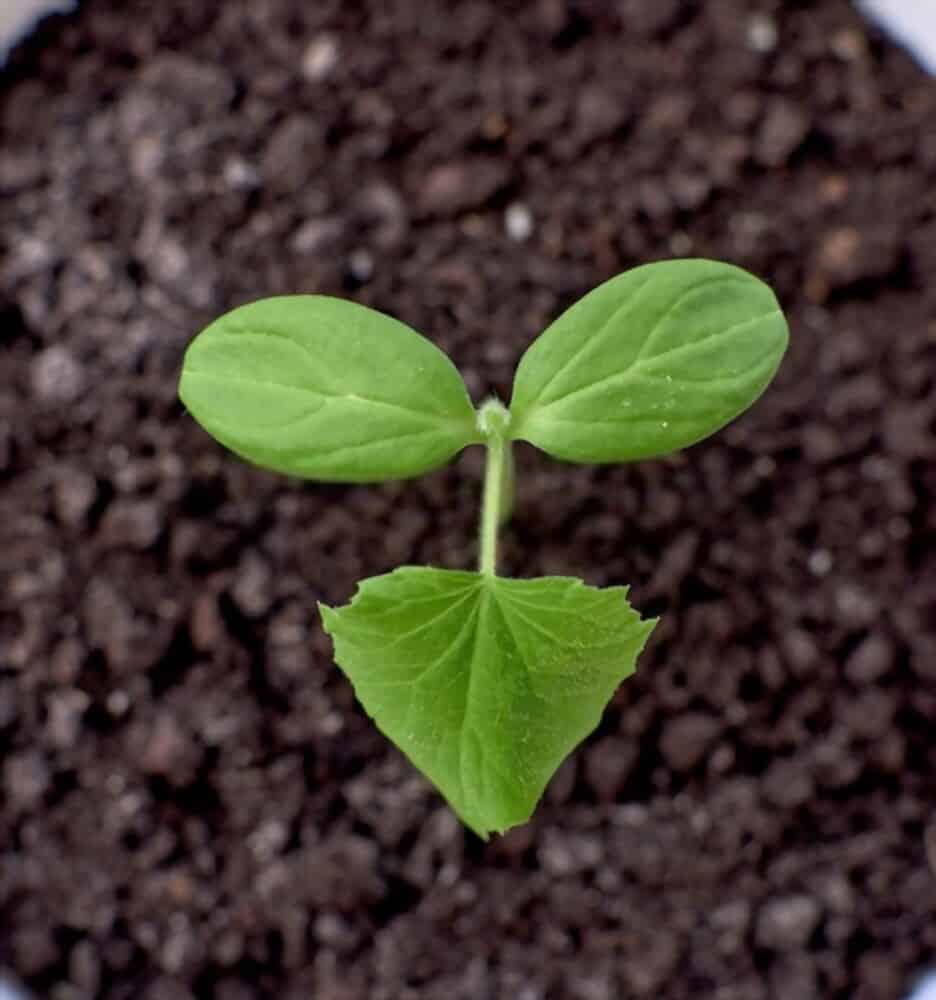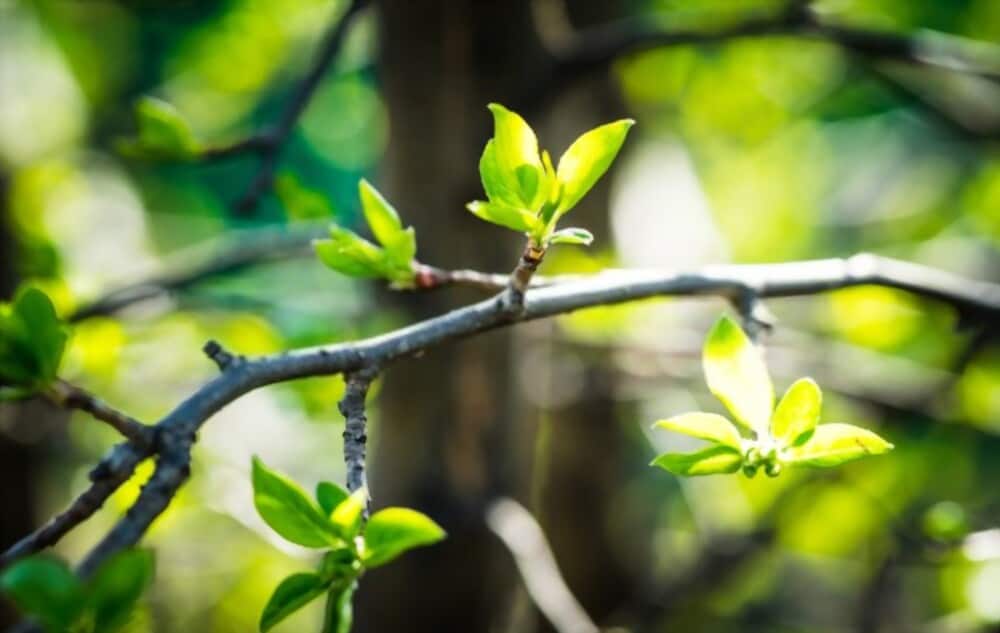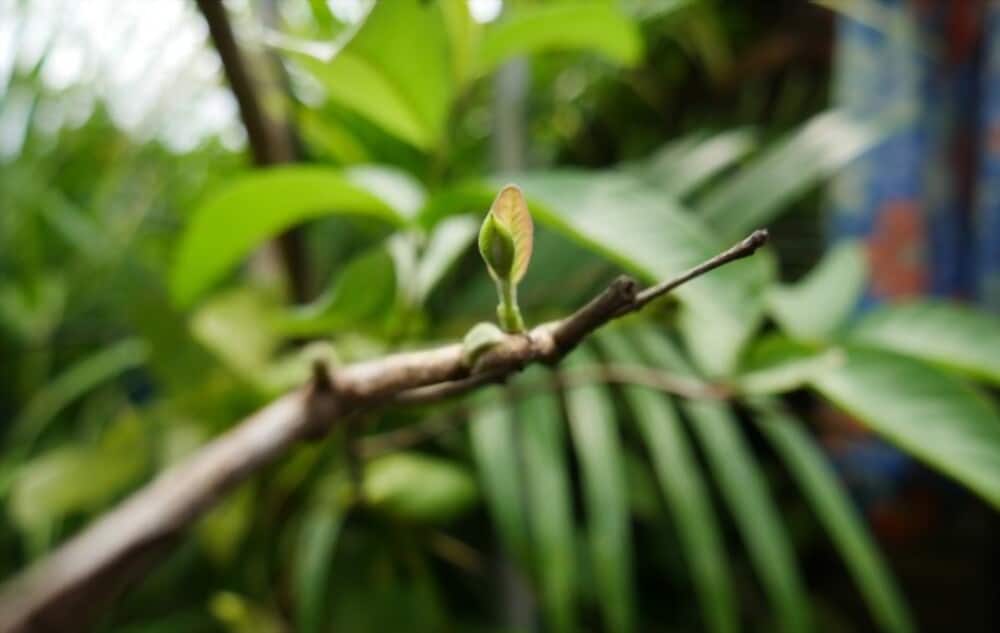Despite being small, new leaves can appear to be mature and robust. There are a variety of explanations as to why a plant could not grow leaves that are the size you anticipate.
Small leaves may be a sign of more severe issues including food deficits, heat stress, or water stress. Smaller leaves indicate a shortage of one or more factors, such as light, water, or fertilizer. This immaturity of the leaves can also be brought on by excessive watering and frequent fertilizing.
You’ll discover in this post the causes of your new leaves’ diminutive size and what you can do to avoid it.
Table of Contents
What Causes Small Plant Leaves?
The size of leaves can vary depending on a variety of circumstances. A plant may generate fewer leaves than typical due to environmental, nutritional, and physical factors including the size of the pot.
You may successfully discover the causal factor and the repairs required to prevent smaller leaves by keeping an eye on these factors and looking for indicators of deficiency.
Among the causal factors cited are:
Inadequate Sunlight
This problem might be brought on by insufficient sunlight or rising light. A lack of light is clearly indicated by the discoloration of the leaves.
Indirect light and some shade are very favorable to plants.
Plants must bend toward the direction of the sun when they do not receive the necessary amount of sunlight due to their ignorance on where they should be located to complete the process of photosynthesis.
Plant leaves grow more slowly as a result.
Similar to this, if you rely on a growing light, it’s possible that not all of the plant’s sections will receive enough of it. It may also be a significant factor.
Improper Watering
Next is incorrect watering. Most of the time, you don’t care if your potting soil is already wet or not. You merely water your plants at your convenience.
Again, there are occasions when you neglect to water them for days. Underwatering causes the soil to become dry and the leaves of the plants to droop, whilst overwatering causes the roots to rot and encourages the growth of fungi.
How will the plant obtain enough nutrients to support the maximum growth of its leaves in these conditions?
Pro tip: Try watering your plants from the bottom. Without running the risk of overwatering, it supplies water to the full mass of soil.
Too Much Fertilizer
Verify the fertilizer to see if there are any issues. Soil crusting could result from overfertilization. If you do, identify if the cause of the little leaves is this or a shortage of fertilizer that is rich in nutrients.
Nutrient Deficiency
Your new leaves may potentially be tiny due to nutrient insufficiency. A young leaf needs nutrients to develop properly.
A deficiency in nutrients in the soil may explain why your seedlings or young plants have tiny, yellowing, or otherwise unhealthy-appearing leaves.
This may occur if you utilize uncomplicated potting soil or if you use a soil mixture that is excessively rich for your young plants.
By using a cheap kit that can be obtained at any hardware store or online, you can check the nutrient levels in your soil and determine how healthy your plants are.
The provided color chart will show you which nutrients your soil is deficient in and how much you should apply to fix the issue.
My plants’ leaves, stems, and general health have been strengthened thanks to the cost-effective liquid fertilizer Purived. Clicking here will take you there!
Temperature and Humidity
Additionally, humidity and temperature are listed. The soil will get too dry if the temperature is too high and the air is not humid, which will impede plants’ ability to grow further.
However, certain species do well at higher temperatures (6-9°C [42-48°F]), where plants normally grow best between 4 and 8°C (39 and 46°F).
The Pot Is Too Small
New leaves may sprout if there is not enough room in the container, but they won’t grow very much. More diminutive than usual.
Plants can grow bigger in larger pots than they would if they were put in smaller pots.
A pot that is 2 to 4 inches wider in diameter than the one the plant was originally put in is the ideal size for transplanting.
The roots now have ample room to expand out and take up more water and nutrients. Extra-large pots will retain more water and need more nutrients for plants to flourish.
How To Get Bigger Leaves on Plants?
Well, a few factors promote the development of large plant leaves. So, all you have to do is keep them in mind to ensure the aesthetically pleasing growth of your plants. See them down below.
Light
It is the most important factor that promotes plant growth by promoting photosynthesis in plant leaves. Therefore, it is important to keep the plants in an area where they can get 6 to 8 hours of consistent sunlight each day.
They can also be positioned at windows that face south. You can leave them in the sun all morning if you like, but stay out of it at midday.
To ensure that the entire plant receives enough sunshine, don’t forget to rotate the plant. Never, however, make the error of leaving them in direct sunlight as this could burn the leaves.
You can rely on LED lights if there isn’t enough sunlight where you are. The general growth of the plant is aided.
Water
Only water your plants when the soil is completely dry. For some, weekly watering might be plenty.
By sticking your finger into the soil, determine the soil’s humidity to reduce the likelihood of overwatering. Use a humidifier or frequently spritz your plants to provide them with the moisture they require if the air around them is too dry.
Additionally, before applying tap water to the soil, filter it. Considering that residual salt in tap water may induce salt buildup in the soil, which can cause plants to burn.
Fertilizer
Use a fertilizer that is balanced in terms of its nitrogen, phosphorus, and potassium content (N-P-K). Plants with little leaves benefit greatly from the usage of fertilizers high in nitrogen.
Make sure trace elements are present because they are also essential.
- It’s imperative to let someone know if your plant is overgrowing so they can help it absorb nutrients.
- Wipe the plant leaves with alcohol to get rid of germs and cunning bugs. To get a better result, remove the damaged leaves.
I have found that Miracle-Gro Soluble fertilizer produces the finest results. It offers excellent value for the money and is durable. Clicking here will take you there.
Will Smaller Leaves Affect The Entire Plant?
They might, but that’s not a lot.
It only has a minor impact on the main process of photosynthesis.
Due to their tiny surface area and low chloroplast density, leaves are unable to absorb enough sunlight.
In addition, when there are few stomata on the leaf, the rate of gaseous exchange is likewise poor. The rate of photosynthesis is impacted in this way. Therefore, it might have an impact on plant growth.
But did you know that smaller plant leaves can be beneficial?
Positive role, indeed. Small leaves have fewer stomata, which helps to lessen transpiration, or to put it another way, water loss.
Should smaller leaves be cut off?
Every plant has its own personality and beauty. Each plant is unique. There isn’t a single, perfect solution.
It’s a good idea to remove little leaves from larger plants like Monsteras and fiddle-leaf figs. The plant’s ability to remove and distribute nutrients declines, which reduces the plant’s capacity for reproduction.
If you decide to take the time to remove smaller leaves, you may either compost them or bury them in the ground next to the plant.
When leaves decay, they return nutrients to the earth for utilization by the plant.
See our article on cutting leaves in half for a more thorough explanation on how to reduce the number of leaves.
Conclusion
While new growth generally indicates that plants are in good condition, smaller-than-usual leaves may indicate more significant issues including nutrient deficits and heat or water stress. Immature leaves may result from a lack of water, light, or fertilizer. This immaturity of the leaves can also be brought on by excessive watering and frequent fertilizing.
In addition to giving plants the right quantity of sunlight, water, fertilizer, and nutrients, trimming the plant and assisting it in growing up a pole may also cause the development of leaves.
FAQ
Which plant has tiny leaves?
Baby’s Tears (Soleirolia Soleirolii) is a cute plant with the tiniest leaves that grows well indoors, outdoors in zones 9 and up, and in fairy gardens.
What is a small leaf called?
A leaf is referred to be a compound leaf when it is made up of little leaf-like structures called leaflets. A complex leaf has multiple leaflets that make up the blade. There is a bud at the base of every leaf, whether it is simple or compound, on the twig. At the base of each leaflet, there are no buds.
What are the smallest leaves?
In Wolffia, the smallest leaf is found. In Wolffia, the leaf and stem are united to create a tiny, flat thallus. Wolffia is the correct response, thus.



